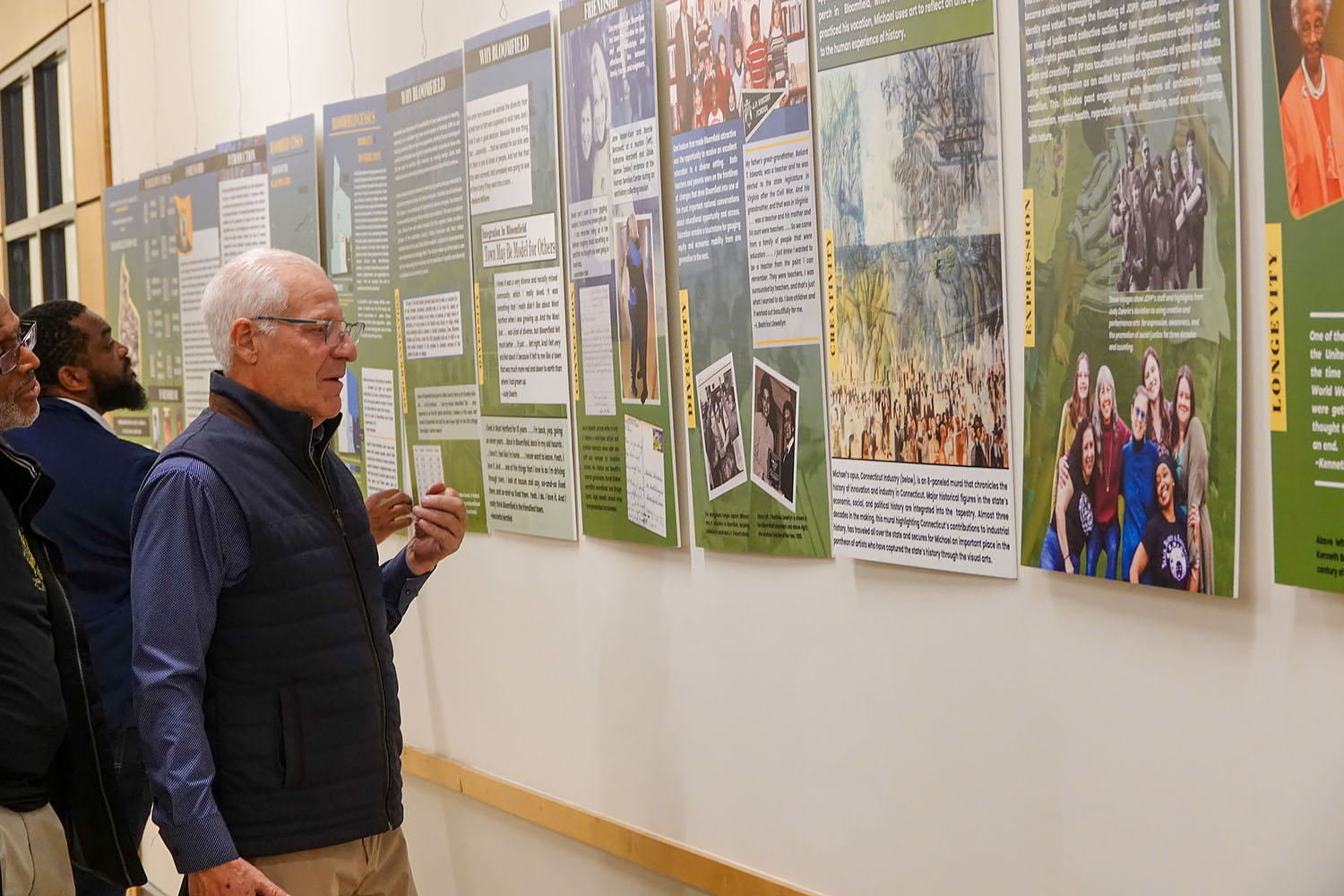
Suicide is a tragedy that profoundly affects not only the person who commits the act, but also family, friends, colleagues, and classmates. But studies have shown that efforts to prevent suicide can reduce the numbers; and UConn, which already has a significant suicide prevention program, is now expanding that initiative into a year-round project.
Suicide is a national – and international – problem. Year after year, ever since the federal Centers for Disease Control and Prevention (CDC) has kept statistics, the number of suicides in the country has remained relatively stable – at about 35,000 deaths annually. Globally, nearly 1 million suicides occur each year. For many years, the number of U.S. college students committing suicide also has remained steady at about 1,100.
UConn has not been immune to the horrors of suicide. For the past three years, the University has undertaken extensive prevention efforts campus-wide. A cross-section of representatives from a variety of departments have been working together on the suicide prevention committee to build positive outreach through the annual Suicide Prevention Week. And now, suicide prevention at UConn will be a year-round initiative.
“We have more than two dozen campus departments involved in planning the work, contributing to the costs of the program, and taking ownership of various aspects of it,” says Barry Schreier, director of Counseling and Mental Health Services and convener of the suicide prevention committee. “It’s really been a team effort.”
“Epidemiology studies show that suicides do decrease when people take an interest,” Schreier says. “When people go into the communities everyone becomes more aware, pays more attention, and the rate drops.”
Schreier says those studies – and calls from UConn students for Suicide Prevention Week to be expanded – led the committee to make it a year-round project.
“Our students are our first responders,” Schreier says. “They’re the ones who are out there. So if they tell us we should do it year-round, then we should do it year-round. We need everybody – faculty, staff, students, the community – everybody, to look for signs of trouble and to help students at risk get help.”
Starting with the traditional Suicide Prevention Week, which runs from Oct. 4 to Oct. 9, the UConn suicide prevention committee will sponsor events at least once a month, publicize prevention strategies, then promote another full scale suicide prevention week in February.
Warning signs include increased substance abuse; feeling there’s no purpose in life; anxiety and agitation; being unable to sleep or, conversely, sleeping all the time; hopelessness; withdrawing from friends, family, even society at large; rage or uncontrolled anger; acting recklessly or engaging in risky activities, seemingly without thinking; or dramatic mood changes.
The signs of acute risk include a person’s threatening to hurt him or herself, or talking of wanting to kill themselves; seeking access to firearms, pills or other means of suicide; and talking or writing about death, dying, or suicide when that is out of the ordinary.
Suicide is the second leading cause of death among college students (accidents, fights, and falls – often fueled by alcohol – are number one). Yet among those students who consider suicide, few seek help, according to the Suicide Prevention Resource Center. The center also says that for every completed suicide, 10-20 times that number attempt to end their lives. The group says surveys indicate that 18 percent of undergraduates and 15 percent of graduate students have “seriously considered attempting” suicide.
“One thing the CDC has found,” says Schreier, “is that if schools limit access to the methods of suicide – limiting access to chemicals, blocking off access to roofs, not allowing windows on upper floors to be opened, locking up toxic chemicals – the rates will decrease.”
Cornell University experienced a rash of suicides this past academic year – six students died, including three who jumped off one of the seven bridges at Cornell and in neighboring Ithaca that span beautiful, and deep, gorges. Since then, the university and the city (Ithaca owns three of the bridges) have installed barriers on the properties. A study group is proposing other methods to reduce the incidence of suicides in the area.
“Suicide is of epidemic proportions on U.S. campuses,” says Schreier. “We lose over 1,000 students each year. If a disease was killing that many students each year, the National Guard would be turned out to respond. But with suicide, the death that dare not speak its name, the response is minimal.
“At UConn, we will speak about this, we will act, and suicide must be minimized as a way to cope with overwhelming emotions,” he adds. “We’re throwing open the doors to the closet of shame. “People try to keep stories of suicide quiet, and that just adds to the problem. People are shamed into keeping their depression, their thoughts of suicide, secret, and as a consequence people in need don’t seek out the mental health counseling they need and that could help them recover.”
Events scheduled for Suicide Prevention Week, which begins Oct. 4, include movies, panels, the Field of Memory – about 1,100 yellow flags distributed across campus, representing the number of suicides in America’s colleges – an interactive art exhibit, and on Oct. 4 from 7-8:30 p.m. in the Student Union Theatre, a keynote address by Alix Strauss, author of Death Becomes Them: Unearthing the Suicides of the Brilliant, the Famous, and the Notorious.
“We’re offering a range of events, many levels of events, to reach as many cultural communities as possible,” says Schreier. “Different things touch people differently.”


